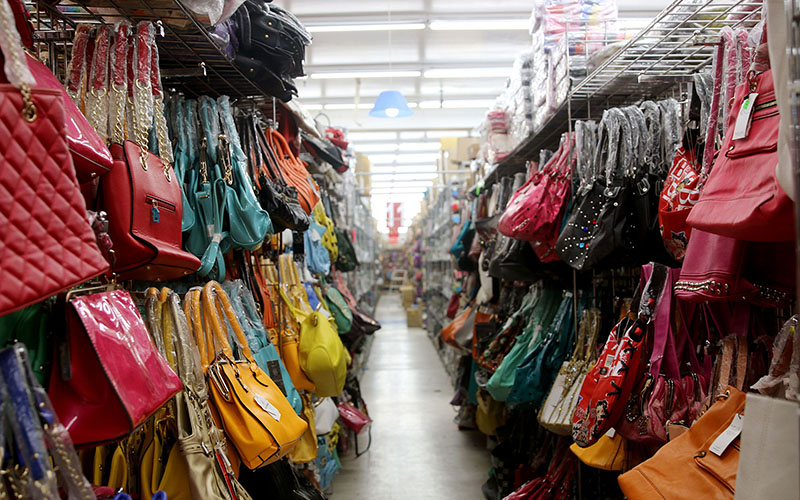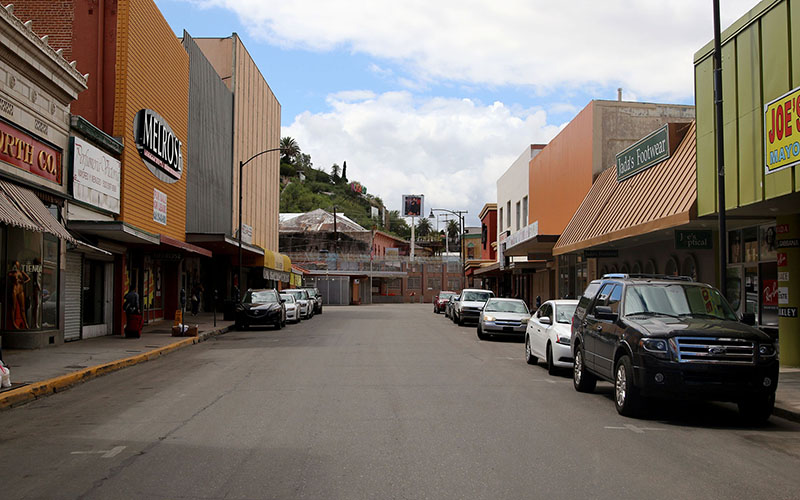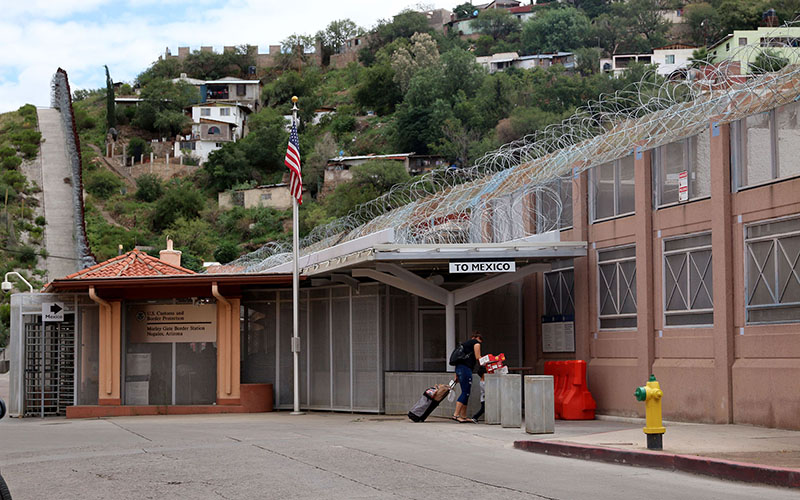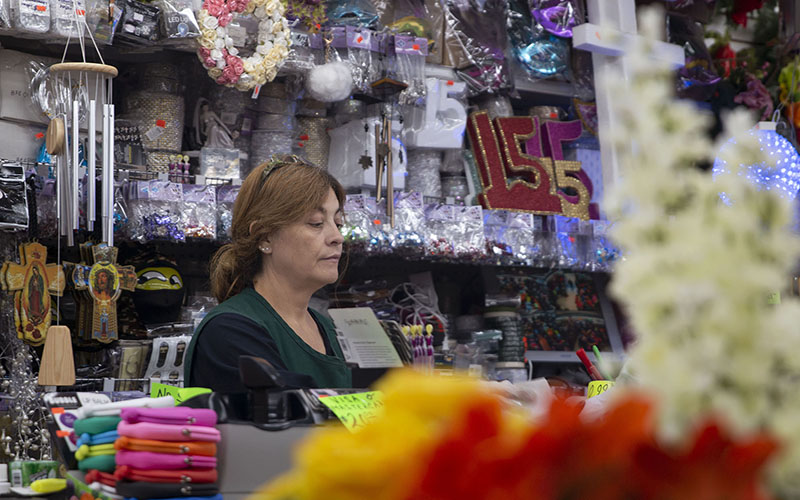NOGALES, Ariz. – While she waits for a family member to pick her up, Daniela Minerva sits near the pedestrian gate in Nogales, Arizona, painting her nails. She often spends time waiting in this spot in order to see her husband who lives in Mexico.
When she visits Nogales, Sonora, she needs to plan at least two hours in advance due to the long lines to get through the border on foot.
“Sometimes you just walk up, and sometimes it’s all the way up to the train tracks, which is usually like two hours and you’re standing there still for 10 minutes because there’s no flow,” Minerva said. “We don’t know who to blame.”
It’s a sentiment shared by many residents of Nogales, Arizona. The number of pedestrians crossing from Mexico into Arizona through the state’s six border crossings fell 12% from the first half of 2018 to the first half of 2019, according to U.S. Department of Transportation data, and the number crossing in passenger vehicles fell 10% in the same period.
The change follows several years of steady growth after a precipitous drop between 2007 and 2014, when DOT data show that crossings at Nogales alone fell from 7.7 million to just 2.8 million pedestrians. Local authorities and border experts attribute the latest drop to a combination of factors: value of the peso, long lines to cross through ports of entry and an increase in online shopping.
“If you have a favorite store, and you go in that store, and that store started making you wait half an hour, 45 minutes, two hours to check out, how long would that be your favorite store?” asked Bruce Bracker, Santa Cruz County Board of Supervisors Chairman. “Probably not very long. You’d find someplace else to shop. But that’s exactly what happened with the Mexican customer base.”

Santa Cruz County Board of Supervisors Chairman Bruce Bracker estimates that almost 90 percent of Nogales’ business revenue comes from Mexican customers. (Photo by Miranda Cyr/Cronkite News)
He sees the evidence in his town.
“[If] you spend time in downtown Nogales, you’re seeing a lot of store closures and just not a lot of people on the street,” Bracker said. “You used to see people shoulder to shoulder on the street, especially on the weekends. On holidays, you couldn’t even walk up and down the sidewalks.”
Bracker said there is a main factor for this change. The lines to cross the U.S. border have continued to grow because there are not sufficient Customs and Border Protection personnel. He said CBP has not done a good job recruiting agents and that a rigorous polygraph exam has left out many candidates.
A CBP official said in an email that the application process is rigorous by design.
“CBP’s hiring standards for our frontline positions are intentionally rigorous and the congressionally required polygraph is just one part of a hiring process that ensures we hire those of the highest integrity,” the statement said.
The spokesperson went on to say CBP is trying to adapt its hiring system through marketing, streamlining parts of the process, and interacting with applicants.
In February, the agency launched its “Fast Track Hiring Process,” which takes about 120 days to complete, compared to 300 days under the traditional method.
In order to be admitted as an agent, the applicants must pass various physical and intellectual tests. CBP’s Credibility Assessment Division reviews and analyzes the polygraph exam, which lasts an average of four hours. The agency’s website says 37 percent of their applicants pass.
The test asks questions about personal and criminal backgrounds. Failing the polygraph does not automatically eliminate an applicant from consideration.
Impact beyond the border
The first sight for people crossing the border from Sonora into Arizona through the Nogales pedestrian gate is Morley Avenue, a street filled with local shops, many of which have been there for years and have felt the effects of the drop in tourism.
Chris Park, who owns the stores La Familia and Victoria, estimated that 90 percent of his customers are Mexican pedestrians. Every day, he hears their complaints about the long lines to enter the country.
“The wait time to cross can be very unpredictable,” said Evan Kory, owner of Kory’s, a clothing store on the avenue. “I think that people who are crossing, especially pedestrians, are (hesitant) to take that risk because, sure, sometimes you’re lucky … but then other days, time to wait might be two to three hours. After having those experiences over time, eventually those numbers (of people crossing) will start dwindling.”
Bracker does not think this lack of tourism would be an issue for the rest of the state, but Juan Ciscomani of the Arizona-Mexico Commission disagrees.
“I think many people assume that any border issue affects only border communities,” said Ciscomani, Gov. Doug Ducey’s senior adviser for regional and international affairs. “That’s not the case … They also come up north, and they go to Tucson, they go to Phoenix, they go to Flagstaff. When these people are not crossing as often anymore, that impacts the entire state.”
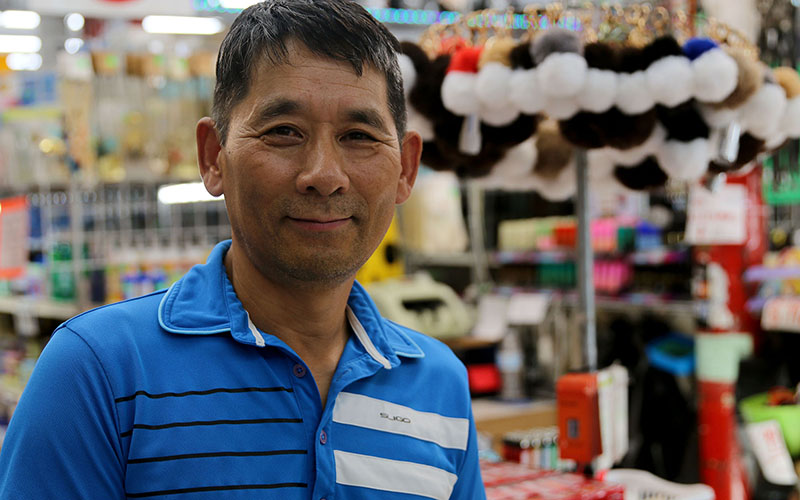
Chris Park, who owns La Familia and Victoria, hears customers, most of them Mexican, complain about the long lines in which they have to wait at the border. (Photo by Miranda Cyr/Cronkite News)
Ciscomani said 228,000 jobs in Arizona depend on this trade relationship, and those jobs exist throughout the state.
However, it’s not all bad news: The Transportation Department’s data show commercial vehicle traffic was up 12% in the first half of this year, compared to the same period in 2018. And while pedestrians aren’t crossing as often, Ciscomani said that when they do cross, they buy more.
He said the commission is asking the federal government to support upgrades to the ports of entry so they can handle the number of people trying to cross. The Trump administration did include $248 million in its fiscal 2020 budget request for improvements to the San Luis Port of Entry, near Yuma. In other cities, Ciscomani said they are proposing improvements such as a two-port system where there is now only one port.
“It’s definitely a long-term solution,” Ciscomani said. “It’s not an easy one. But it really just goes down to our ports, able to, number one, sustain the volume of people that we want to come across to do the shopping. And do we have the staff to do that as well. So it’s both the physical infrastructure, but also human power on staffing the ports.”
Unless improvements are made, Ciscomani said these problems will only continue to worsen.
Owners on Morley Avenue are waiting for those improvements, just as pedestrians are waiting in lines to cross the border.
“Every year is more down, more down,” said Rebeca Castañeda, manager of Chis, a store of wholesale and retail, in a mix of Spanish and English. “Many stores here on Morley are closing.”
Cronkite News video by Frankie McLister

